List of Authors
>>About this blog
Recent blog post
|
[Silver]
October 30, 2018 14:00
According to the Takarada Ebisu Shrine Betara City Preservation Society, "The Origin of Takarada Shrine Ebisu Shrine Ebisu Shrine Engi and Dai Temmacho", (omitted)
Takarada Ebisu God is a guardian deity of business prosperity, family prosperity, and fire prevention, and the reverence is widely throughout the Kanto region, with `` Bettara City '' on October 19 and the Ebisu God Festival on October 20 every year. Will be held grandly. Bettara City is still celebrating Ebisu-ko as an important annual event for merchants who are preparing to approach the end of the year and celebrate the New Year this year. In addition, young people used the congestion of the pickled radish (bettara) and called it to the worshiped women and put it on the sleeves of the kimono while calling it Bettada, so it became the name of Bettara It is reported that it has become.
According to a leaflet published by Takaya Co., Ltd. in Tokyo, the city started on October 20 at the gate of Takarada Ebisu Shrine in the middle of the Edo period in offering City, where fish, vegetables, and Komiya (household miniature shrine) were sold. As the pickled radish with koji was sold well, it came to be called "Bettara City". ] That's right.
This year, with my high school classmates, I studied the history and manufacturing method of Washi in Ozu Washi's store, purchased Washi products sold in the store, and then went to Bettara City. In front of Takarada Ebisu Shrine, there were many worshipers.
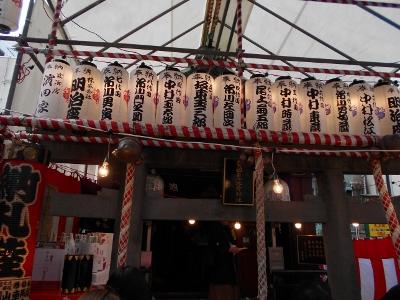
Edoya is a specialty store for brushing, founded in 1718 in the Edo period.
Not only for the kitchen, but also for beauty brushes were sold like flying.
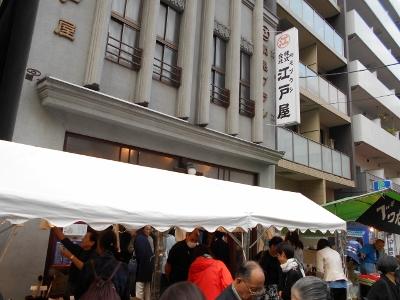
From Takarada Ebisu Shrine to the vicinity of Sugimori Shrine, local shops, etc.
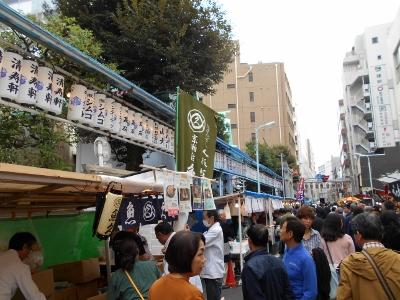
A lot of shops were open, and we enjoyed shopping and eating and drinking.
[Silver]
October 30, 2018 12:00
It's a weekday. We gathered in front of the Heidai Shoten in front of Nihonbashi Mitsukoshi, and six men and women were watching the old Nihonbashi picture scrolls.
Enter the money museum through the Mitsui Main Building and the Bank of Japan. At the Money Museum, I studied the history of money.
I visited Meibashi and Nihonbashi to learn about being the prime sign of Japanese roads, and learned about the history of the fish market in Nihonbashi at Otohime Square.
Entered "Honen Manpuku" in response to the needs of women's groups for a delicious and quiet lunch place. We had 6 seafood bowls, limited to 15 meals.
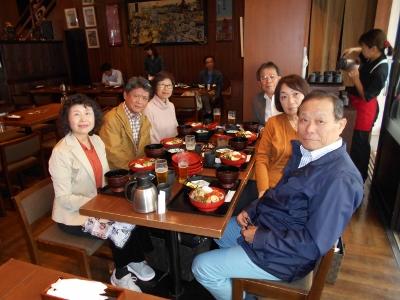
With a happy smile
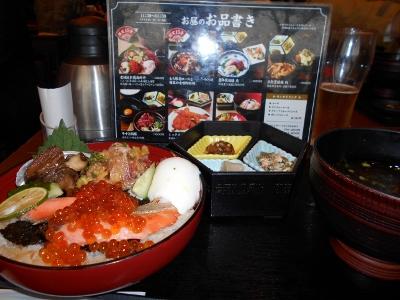
Please take a look at the beautiful seafood bowl.
After this, the party entered Cored Muromachi and worshiped Fukutoku Inari. I purchased a wonderful Japanese paper product from Ozu Washi and enjoyed a stroll from Kodemmacho to Ningyocho.
Everyone, please enjoy a walk on this course.
Click here for the website of Honen Manpuku. http://www.hounenmanpuku.jp/
[Nyan,]
October 27, 2018 18:00
On October 20, we participated in the welfare council festival held in Chiyoda-ku (ward office) next to Chuo-ku. . We had a variety of entertainment/workshops, Ultraman Seven participated in the event, opened stores in our sister cities, Tsumagoimura and Akita. In addition, various handmade foods are sold at low cost, so we were able to have a more enjoyable time than we had imagined  . The photo shows a list of food at the store. I received most kinds, and I was quite hungry.
Tsumagoi Village (a sister city of Chiyoda-ku) is cabbage. (The photo shows the cabbage of Tsumagoi Village)
All dishes and chopsticks at the store are unified and thoroughly reused. The festival in the future may be like this.
********************
By the way, while reflecting on that I ate a little too much, I walked to Nihonbashi via Kanda.
Yes, this time it's Betara City in Nihonbashi.
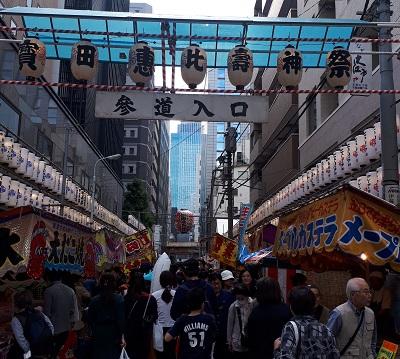 Speaking of Bettara City, among the various theories, the name "Bettara Pickled" comes from the fact that radish is pickled with sweeteners such as koji and sugar, so it sticks on clothes . In the past, a young man shouted, "I'm swaying a radish tied to a rope while shouting, "I'm swaying it ~, I'm swaying it on the sleeves of a visitor's kimono." " There are some descriptions in this article. In a sense, it looks smiling, but personally, at that time, if you pollute your kimono, it would be harder to remove the smell and dirt more than modern times, so is it really permissible like such a junior high school student? ? I'm wondering about it. How did you actually do it?  
By the way, my aim is "with skin" and "red turnip" among pickled vegetables.
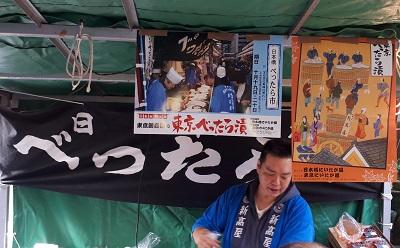 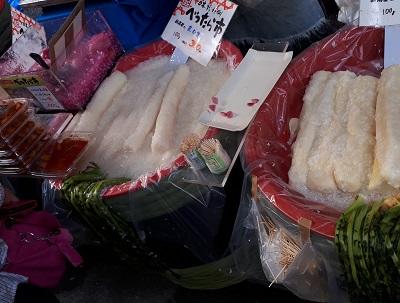 I ate too much before coming to Betara on this day, so I didn't get much hungry, but it's fun to go around the stalls and walk around. What are you looking for? If you missed this year, it will be fixed on October 19 and 20 every year, so I hope you will incorporate it into your schedule  .
[Silver]
October 27, 2018 09:00
"Yagenbori fair Festival Mobile Shopping Street" is being held on October 26 and 27.
In the morning of October 26, I went only to "Yagenbori" for a great bargain.
At the entrance to the approach, I asked my brother distributing flyers for Happy Halo Vienna and the fair Festival. It is said that you can get one lottery ticket for 500 yen.
Ota Milk, located at the entrance of the venue, was founded in 1877 and is the 141st year this year. It is said that Ryunosuke Akutagawa's novel has been written along with the flower district of Yanagibashi. It is famous for its delicious chiffon cake. There is also an eat-in space in the store. Purchase 3 "Mango Mushi Cake" manufactured by Ota Bakery. Now you get one lottery ticket.
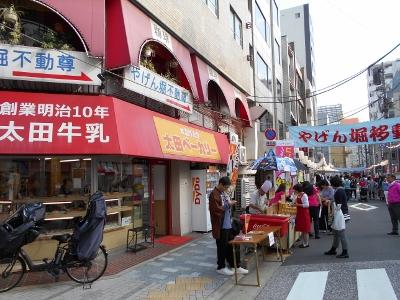
Many products such as gloves, collar rolls, hats, toys, shoes, etc. were sold.
Purchased sake exhibited by a local liquor store.
Small children and mothers seemed to have fun picking up bamboo dragonflies and blowing a whistle.
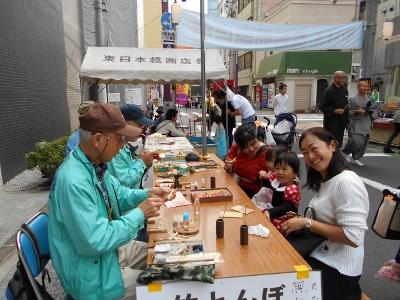
Today was after three sightseeing ambassadors of Chuo-ku handed out flower pots. When I was sorry, I encountered shopping in my clothes after work.
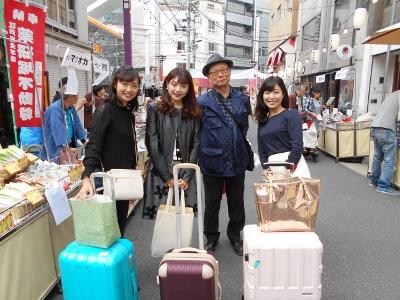
A commemorative photo was taken in response to the request of visitors.
When I visited Yagenbori Fudoin, I was given a talisman of the Chinese zodiac. And every time, I kept it for the hospitality of tea confectionery and received delicious matcha and sweets.
●Venue
Higashi Nihonbashi 2-chome Yagenbori Fudoin Street
●Date of the event
October 26 (Fri) 11:00 to 18:00
October 27 (Sat) 11:00 to 17:00
Click here for the website of Yagenbori Shopping Street.
http://www.yagenbori.net/detail.php?page_id=14309&page_type=1
[Hanes]
October 26, 2018 18:00
Hello. This is a new correspondent, Hanes. 
The pasta shop "sisi Niboshi" by Mr. Takayama, the owner chef of Kagurazaka's meat Italian "Carneya" and the aged meat restaurant "Carneya Sannomans" in Nishiazabu.
Did you know that it is in Nihonbashi? (1st anniversary of the opening in October of this year)
Because it is a lunchtime limited business, some people may unexpectedly say "I didn't know!"
I was finally able to go last Saturday.
What I'm worried about is its unique store name?
sisi niboshi...Botan...A lion and a peony...
That's right. It is derived from the "lion peony" on the flower tag, and it is also the logo of the signboard.
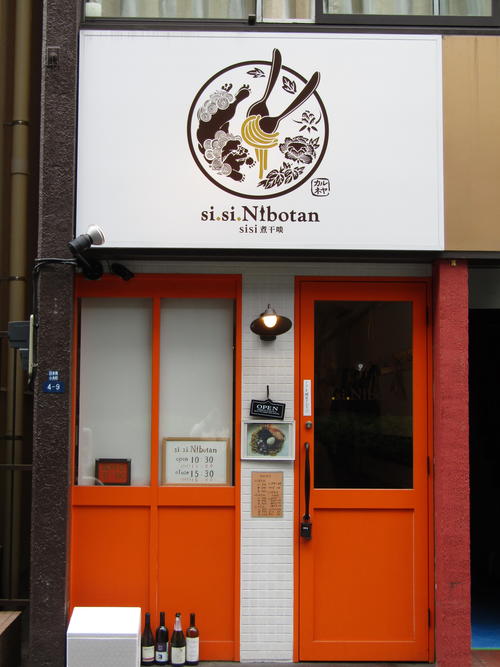
And it is just called "niboshi", and there is a new sense menu based on niboshi.
・"Nibotan" made with butter-flavored boiled sauce.
・Add yuzu to boiled sauce and popular among women "Pepetan"
・"Toma Tan" made by adding tomatoes to the boiled sauce.
・Boiled soup stock and sweet potato soup "Nibosui", etc.
(Order is a meal ticket system.)
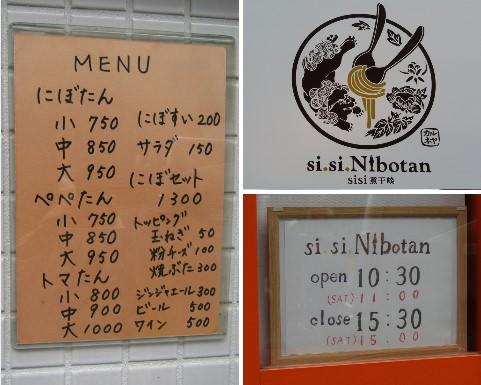
It's a small shop with only counter seats, but it's a small shop.
It has a stylish and mysterious and cozy atmosphere.
At the counter, there were boiled and dried vegetables that can be freely used, and this was also delicious with moderate salt content.
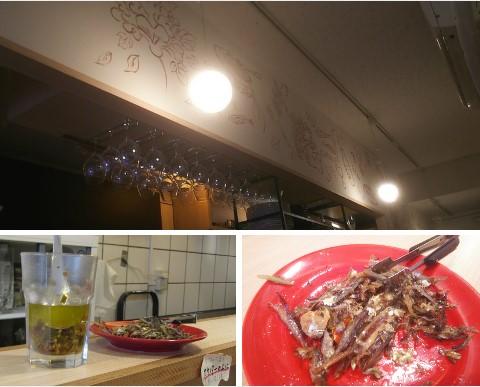
And a few minutes to wait..."Pettan (small)" I ordered came out.
Homemade char siu, purple onion with a crispy texture, seaweed, and quail eggs.
It coexists as pasta toppings without offsetting each other's goodness.
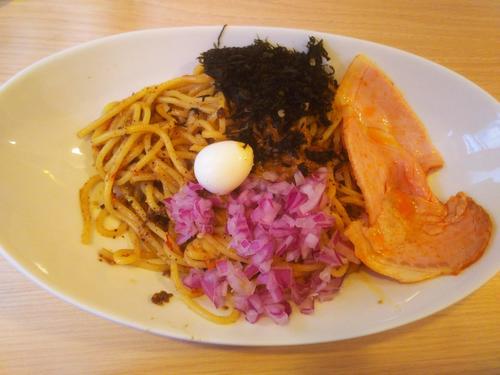
It is a worrisome taste, but it has a wonderful finish that does not make you feel the smell of fish at all.
The dashi was very effective, and it was delicious.
Expectations for other menus have increased, and it has become a shop I want to visit again!
If you like pasta, how about lunch here when you come near?
■sisi nibotan (shinibotan)
Address: 4-9, Nihonbashikobunacho, Chuo-ku, Tokyo
Business hours From 10:30 to 15:30 (* Saturday from 11:00 to 15:00)
Regular holidays: Day/holiday
Official Facebook: https://www.facebook.com/SisiNibotansisi-botansisi -243739119484689/
※This article has been approved by the store manager.
[Minato kid]
October 25, 2018 18:00
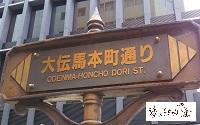 Hello, this is Minato kid. Hello, this is Minato kid.
Today, I would like to walk "Odenma Honcho-dori St." from Nihonbashi Honmachi 3-chome 6 to Nihonbashi Daidenmacho 16.
♪ Otemmacho as a publishing town
In the Edo period, there was a town called "Toyu-cho". It's the 13th area of Odenmacho today. In this area, there were many Shoshi because the play town was close.
In the Genroku era (1688-1704), the scale shop dealing with joruri books, and in the Tenmei era (1781-89), it was a town famous for red-e (a type of ukiyo-e).
In such a town, there was a Shoshido by Juzaburo Tsutaya (1750-1797), a popular publisher in the middle of the Edo period.
Koshodo opened a store in this area in 1783 (1783), and published yellow covers, stylish books (Sharebon), Kyoka books, Nishiki-e, etc. Among them, many leading writers such as Ota Nanbo) and Kyoden Santo (Santo Kyoden), many of the leading players such as Katsushika Hokusai Kitagawa, and many Torakutama.
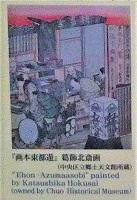 "Higamoto Toyu" Katsushika Hokusai painting "Higamoto Toyu" Katsushika Hokusai painting
The information board of Koshodo is located along the Odenma Honcho-dori St., in the 13th area of Odenmacho.
In addition, one of the publishers who published "Tokaidochu Hizakurige" of Jukkasha 1765-1831, which has a grave in Chuo-ku, is the same Toyu-cho, You can give Jirobei Murataya.
In addition, print shops such as Senzurudo Tsuruya Kiemon, who sold the Edo calendar and Chiyo paintings, and Gun Gyokudo Matsumoto Zenbei, and Matsumodohama Matsuya Kosuke were also famous. Japanese paper is light and durable and not bulky, so these prints were perfect for Edo souvenirs.
 ♪ Otemmacho as a cotton wholesaler district ♪ Otemmacho as a cotton wholesaler district
Another characteristic of Otemmacho is the cotton wholesaler district of the former 1.2-chome.
On the north side of the former Odenmacho 2-chome, there is a mansion from Mikawa country (now eastern Aichi prefecture) and a village headman in Otemmacho. Was. It is said that the townspeople under the control opened a Mikawa cotton wholesaler in the town.
In addition, the Hamacho River, which was once excavated on the east side of Otemmacho, laid the foundation for this town to prosper as a wholesale district. In the late Edo period, "Edo Shopping Sogo Guide" states that there are 22 cotton wholesalers alone.
On the south side of Daidenma Honcho-dori St., there was a street called Daimaru Shindo (Daimaru Jinmichi) in the former Totagocho. As the name implies, in 1743 (1743), a kimono store run by Shoemon Shimomura, Daimaruya opened here.
Since then, Otemmacho has formed a cotton wholesaler area called "Momendana" and boasts its prosperity to this day.
From the Daidenma Honcho-dori St. I walked this time, I could see the Sky Tree straight ahead. Looking back, the other side of the street is the liveliness of Bettara City. Even in the old days of the Edo period, the large store in Otemmacho performed the Ebisu-ko on New Year's Day 20 and October 20.
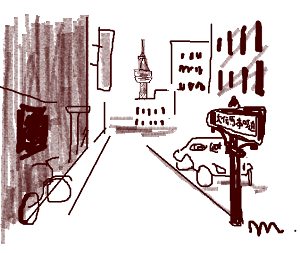
Correspondent Minato kid, Chuo-ku Tourism Association

No. 25 October 22, 2018
|
Links
|





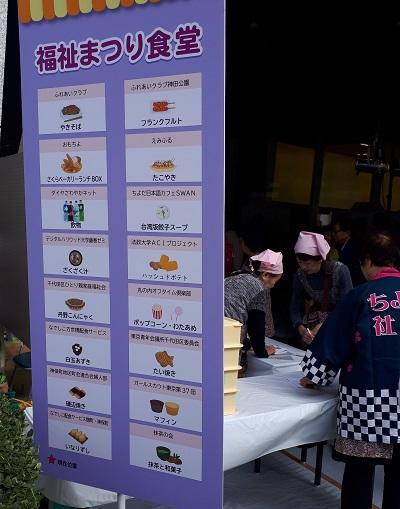
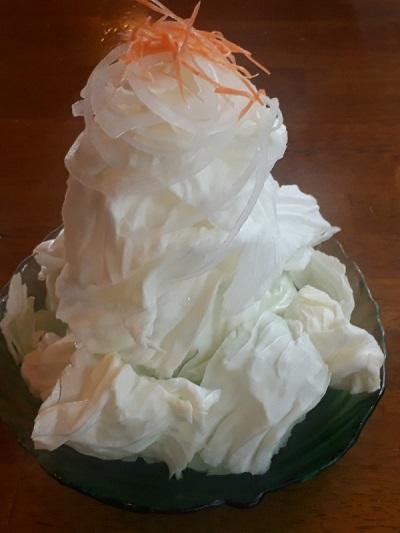



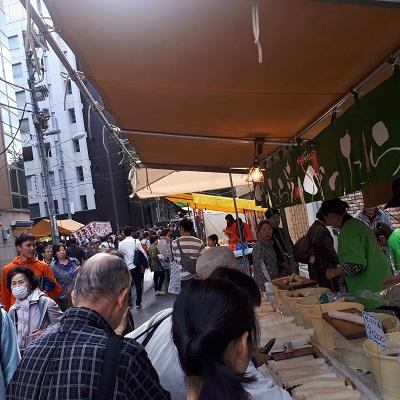







 ♪ Otemmacho as a cotton wholesaler district
♪ Otemmacho as a cotton wholesaler district


